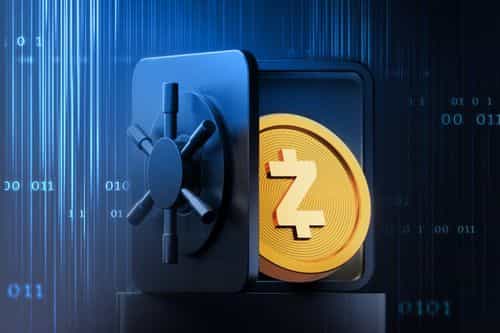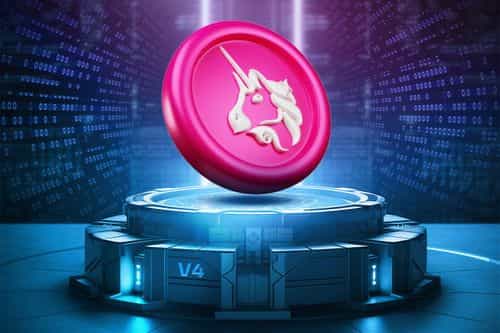Sui: Move with Extra Features


Sui Blockchain is changing the way we think about scalability and performance in the world of decentralized applications. Developed by Mysten Labs, this high-performance Layer 1 network introduces innovative concepts. In this article, we’ll explore a technical deep dive into its architecture, programming language and ecosystem performance and how these technologies enable sub-second finality, thousands of transactions per second, and a developer-friendly ecosystem. Keep reading to understand how Sui is paving the way for the next generation of blockchain applications.
TL;DR
Sui Blockchain combines a high-performance object-centric architecture with parallel execution and the Move programming language for secure asset management. Its Narwhal and Bullshark consensus enable low-latency finality and high throughput, achieving 297,000 TPS in benchmarks. With over $500M TVL and $50M+ in daily DEX volume, Sui supports a growing ecosystem and offers strong developer tools and gas-efficient transactions. For a fast breakdown of Sui blockchain and how it operates, review the list below:
Introduction
Sui Blockchain is a general-purpose Layer 1 blockchain built from the ground up to address limitations in existing smart contract platforms. Developed by Mysten Labs, a team of ex-Meta engineers behind the Diem and Move projects, Sui introduces several core innovations in blockchain architecture, programming language design, and consensus mechanism to enable high throughput, low latency, and a superior developer and user experience.
The Sui network went live in May 2023 and has since grown into one of the most performant and active ecosystems in the blockchain space.
Architecture and Execution Model
Sui’s architectural design is centered on enabling scalability without compromising on decentralization, safety, or ease of development. The object-centric data model allows it to diverge from the constraints of globally shared state systems found in traditional blockchain designs.
Unlike monolithic chains with strict serialization of every transaction, Sui enables fine-grained concurrency by allowing independent operations on objects to be processed simultaneously. Each object encapsulates its own state and behavior, which dramatically reduces the contention that typically plagues high-throughput smart contract platforms.
The execution layer differentiates between owned-object transactions and shared-object transactions, a distinction that permits efficient batching and pipelining of parallel workloads. Owned-object transactions are validated independently of one another, thereby eliminating bottlenecks created by global state dependencies. This parallel execution path is ideal for common workloads such as NFT minting, wallet balance updates, and localized state mutations.
Another critical architectural innovation is Sui’s use of a versioned object store, which keeps track of historical states while enabling reversible execution and auditability. When transactions are executed, the object versions they interact with are incremented, ensuring that each state transition is verifiable and traceable.
On the data availability side, Sui employs efficient state sharding at the application layer, where logically unrelated data, such as different DeFi pools or game assets, can be stored and processed independently. This avoids the need for complex validator coordination, as each validator only needs to maintain the relevant state shards.
In practice, this architecture allows Sui to achieve near-linear scaling with respect to the number of cores or machines deployed per validator. Moreover, it minimizes network overhead by reducing the frequency of global synchronization, a key limitation in legacy L1 chains.

Consensus Protocol: Narwhal & Bullshark
Sui’s consensus stack, composed of Narwhal and Bullshark, is a modular, asynchronous, and leaderless protocol designed to maximize throughput and resilience. Together, they enable Sui to process transactions at a much higher rate than conventional BFT protocols without introducing the complexity of synchronous coordination.
A major advantage of this separation is pipeline parallelism: Narwhal can continue ingesting transactions even while Bullshark is finalizing previous rounds. This eliminates idle time and dramatically increases throughput. Furthermore, Narwhal’s DAG acts as a buffer against temporary network partitions or validator downtime, as it ensures data persistence until all peers have acknowledged it.
The consensus is Byzantine Fault Tolerant and can tolerate up to one-third of validators being malicious or offline. Unlike protocols that depend on global timeouts or strict round synchronization, Bullshark relies on causal dependencies within the DAG to ensure safety and liveness.
This system achieves sub-second finality in real-world conditions and can scale to hundreds of thousands of transactions per second under parallel execution models. It’s particularly well-suited for applications like decentralized exchanges, high-frequency trading, and real-time gaming, where latency and reliability are paramount.

Move Programming Language
Sui’s version of the Move programming language introduces powerful abstractions and guarantees that redefine smart contract safety and expressiveness. Built on Rust principles, Move is a resource-oriented language that treats digital assets as first-class, non-copyable types.
At its core, Move enforces linear resource semantics: values representing coins, NFTs, or any user-defined asset cannot be duplicated or dropped. This dramatically reduces the surface area for bugs and exploits such as reentrancy, double-spending, or token mismanagement.
Sui’s Move implementation extends this with an object model that maps naturally onto its execution engine. Developers define objects with persistent storage, encapsulated behavior, and well-defined ownership. This provides an intuitive and secure framework for building complex applications, including lending markets, games, and marketplaces.
The language also supports a capability-based security model, where access rights to objects are granted through explicit handles or capabilities. This mechanism prevents unauthorized actions while enabling composability among contracts.
A unique aspect of Sui Move is the module/package system. Code is deployed as packages containing modules, each with versioned APIs. This enables upgradable logic, interface stability, and permissioned publishing. Developers can patch or extend functionality without breaking clients relying on older versions.
Sui Move is complemented by a rich toolchain:
Move’s syntax is readable, its semantics are mathematically rigorous, and its resource model makes it an ideal choice for building verifiable, mission-critical blockchain software.

Network Performance
Sui’s performance is one of its most differentiating attributes, enabling real-world use cases that would be infeasible on slower or serially constrained chains. Thanks to its architecture and consensus innovations, Sui can maintain high throughput even under variable demand.
Synthetic Benchmarks
In lab environments, Sui has demonstrated performance exceeding 297,000 TPS when processing owned-object transactions, where no contention or shared state exists. Even under complex mixed workloads involving shared objects and smart contract interactions, the network sustains 20,000 to 40,000 TPS.
This scalability is facilitated by the parallel transaction scheduler, which optimistically executes transactions in batches and only applies locks or rollback mechanisms if conflicts are detected. This contrasts with serial execution, where all transactions are ordered and executed one after another.
Finality and Latency
Sui finalizes transactions in sub-second timeframes. Finality is not dependent on a block production interval but is reached once a quorum of validators acknowledges the transaction. Typical latency ranges from 480ms to 600ms, even under network stress.
Checkpointing occurs every few seconds and is used for auditability and state synchronization. Unlike chains that depend on probabilistic confirmations, Sui’s deterministic finality makes it ideal for sensitive applications like payments, gaming, and high-speed arbitrage.
Real-World Performance
As of July 2025:
These metrics confirm that Sui’s theoretical performance advantages translate directly into real-world scalability.
Developer Experience
Sui is engineered with a developer-first mindset, offering powerful abstractions, secure primitives, and a streamlined workflow. It minimizes boilerplate and makes complex patterns, like token minting, royalty enforcement, and asset gating, easy to implement.
Abstractions
Sui’s object model aligns well with real-world entities. Developers don’t need to simulate ownership or state via mappings or proxies; ownership and access control are part of the base object structure. This leads to cleaner code and fewer security pitfalls.
The Sui SDKs (TypeScript, Rust) and GraphQL APIs provide full access to on-chain data, transactions, and object histories. This allows frontends and indexers to build real-time, user-friendly dApps with minimal effort.
Sui CLI supports:
Sui Wallet and Turin Wallet provide native signing interfaces, along with support for sponsored transactions, where developers can cover gas fees to onboard new users.
Tooling and Community
This comprehensive developer stack makes Sui one of the most accessible platforms for building advanced decentralized applications.
Security and Upgrades
Security is a first-class concern in Sui’s design, achieved through a combination of formal methods, runtime safety, and decentralized governance.
Formal Verification
The Move Prover supports theorem-like assertions within smart contracts, allowing developers to prove critical invariants like asset conservation, access restrictions, and termination guarantees. This is especially useful for protocols dealing with custody or cross-chain interactions.
All Sui packages are compiled to bytecode, which undergoes multiple static analyses before being deployed. Invalid or unsafe patterns are rejected at compilation time, drastically reducing exploit surfaces.
Runtime Enforcement
Sui enforces strict type and memory safety at runtime. Resource duplication, dangling references, and unauthorized mutations are all prevented by the VM. Validators independently verify execution before finalizing transactions.
Object versioning ensures that even in the case of race conditions or network splits, state cannot be reverted or replayed incorrectly.
Upgrade Mechanisms
Upgrades in Sui are coordinated via:
Validators rotate signing keys at each epoch, preventing long-term compromise. Stake-weighted governance ensures that upgrades are aligned with ecosystem interests.
Additionally, Sui supports circuit-breaking logic for emergency protocol freezes in case of critical vulnerabilities, providing a safety net without relying on off-chain coordination.
Comparison with Leading L1s
| Feature | Sui | Ethereum | Solana |
| Finality Time | ~400ms | ~15 seconds (L1) | ~400ms |
| TPS (practical) | ~5,000+ | ~30 | ~3,000+ |
| TPS (theoretical) | ~297,000 | ~120 | ~62,000 |
| Smart Contract Language | Move | Solidity | Rust |
| Parallel Execution | Yes | No | Yes |
| Object-Based Architecture | Yes | No | No |
| Consensus Model | Narwhal + Bullshark | Ethereum PoS | Tower BFT |
| Dev Tooling | Rich SDKs, Move Studio | Foundry, Hardhat | Anchor, Solana CLI |
Conclusion
Sui Blockchain presents a novel approach to Layer 1 blockchain scalability and usability. With its object-based storage model, parallel transaction execution, and highly efficient consensus protocol, Sui achieves unmatched performance without sacrificing decentralization or developer flexibility.
Its adoption of the Move language, with safety, ownership, and expressiveness at its core, makes it uniquely positioned to build safe and composable financial and gaming applications. Combined with an expanding DeFi ecosystem, strong TVL, and active user base, Sui is emerging as a top-tier platform for next-generation decentralized applications.
As Sui continues to upgrade its protocol, attract developers, and expand its ecosystem, its integration into cross-chain systems like Rango Exchange becomes increasingly valuable for users and developers alike.
References
Frequently asked questions
Check out most commonly asked questions, addressed based on community needs. Can't find what you are looking for?
Contact us, our friendly support helps!
Can Sui interact with other blockchains or existing Web3 ecosystems?
Yes, Sui is designed with cross-chain interoperability in mind. While it’s a standalone Layer 1, integrations with bridges and protocols like Wormhole and Rango are enabling asset transfers and smart contract calls between Sui and other networks like Ethereum, Solana, and BNB Chain. This positions Sui not as an isolated platform, but as a high-speed execution layer for multi-chain applications and liquidity routing.
How does Sui make onboarding easier for new users?
With sponsored transactions, users don’t need to pay gas fees upfront. This, along with intuitive wallets like Sui Wallet, makes onboarding simple, even for non-crypto users.
What kind of apps are best built on Sui?
Sui is ideal for high-speed apps like NFT platforms, real-time games, DEXs, and payment systems. Its parallel execution and object model handle heavy traffic with ease, enabling smooth user experiences.




